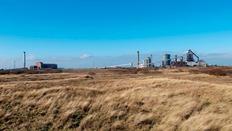
Project Overview
Johnson Matthey’s LCH™ technology has been selected for bp’s H2Teesside project, which aims to be one of the UK’s largest low carbon (blue) hydrogen facilities. H2Teesside targets 1.2GW of hydrogen production by 2030, contributing over 10% of the UK Government’s hydrogen target of 10GW by 2030.
Technological Advancements
H2Teesside will utilize JM’s innovative LCH technology, which combines a gas-heated reformer with an autothermal reformer (GHR-ATR). This technology offers the lowest natural gas usage commercially available and can capture up to 99% of carbon dioxide produced, ensuring the lowest levelised cost of hydrogen (LCOH) and high carbon efficiency.
Strategic Location
Tees Valley, where the project is located, accounts for 64% of total local CO₂ emissions. The area’s proximity to North Sea natural gas, established pipe corridors, and planned carbon capture infrastructure by the bp-led Northern Endurance Partnership makes it ideal for H2Teesside to lead a low carbon transformation, supporting local industry and job creation.
Government Support
H2Teesside, along with NZT Power and BOC Teesside Hydrogen, has been selected by the UK Government as Track-1 Capture Projects to proceed to negotiations for funding from the Department for Energy Security & Net Zero (DESNZ) as part of Phase 2 of the cluster sequencing process for carbon capture, utilization, and storage (CCUS).
Timeline
The project is currently in the detailed design phase and aims to commence commercial operations by 2028, contributing significantly to the decarbonization of various industries in Teesside.
